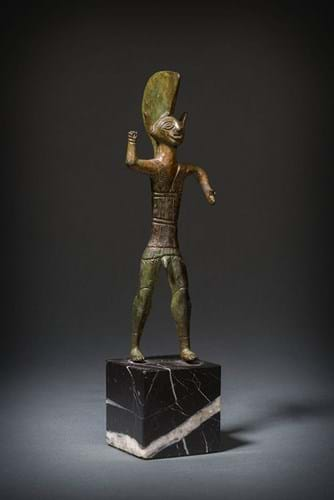
The 7in (17cm) bronze, which depicts a man in a helmet, is dated to the late archaic period (late 6th century to early 5th century).
Prior to 1979 it had become part of an English private collection and was later sold at auction in 2015. It was this purchaser that contacted St James’s dealers Forge and Lynch last year to sell the object.
After viewing the statuette, Forge consulted Judith Swaddling at the department of Greek and Roman Antiquities at the British Museum. Swaddling, together with Dyfri Williams who is formerly of the British Museum, identified it as having come from the pre-war collection of Antikensammlung.
Provenance
It is believed the statuette was first owned by the Antikensammlung, which is the collection of Classical Antiquities and part of Berlin’s state museums, in 1869 when it was acquired from the estate of the first archaeologist at the Berlin museum, Eduard Gerhard.
Once the owner was made aware of its history he was happy to donate it to the Antikensammlung which is overseen by the Stiftung Preußischer Kulturbesitz (Prussian Cultural Heritage Foundation).
Hermann Parzinger, president of the Stiftung Preußischer Kulturbesitz, said: “I am very grateful to the consignor for his generosity, to Oliver Forge for his support and to the British Museum for its identification… This is an excellent example of how owners, the art trade and museums can work together successfully to restore works of art that have been lost through historical circumstances.”
The online database of Antikensammlung helped in the identification of the statuette. It is believed that at the outbreak of war in 1939 objects in Berlin’s museums were stored to avoid bomb damage. It is believed this statuette was stolen at the end of the war and was later taken to England.





